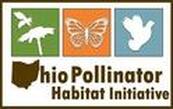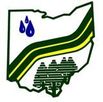Why plant native plants? What is a native plant?
Generally speaking, a native plant is a plant, tree, or shrub that is indigenous to the region. Native plants support millions of beneficial insects and wildlife species, which too, are native to the area. Limiting non-native plants will help to limit non-native, non-beneficial insects and wildlife. Creating a native ecosystem benefits the food chain and food production.
Milkweed Pod CollectionPlease bring the dry, bug-free pods to the Wood SWCD office September 1-October 30.
It is best to collect pods into paper bags. Avoid using plastic bags because they can allow mold to develop. It is recommended to wear disposable gloves when picking and handling pods. Ideally, it is recommended to leave at least 50 percent of the seed crop at a given site is left to allow for natural recruitment and regeneration of the native population the next growing season. There are situations where total collection can occur ie: if the field or area will be mowed completely or the area will be converted for crop or development.
Seed pods from common milkweed should be collected ONLY WHEN THE PODS ARE DRY & BROWN-GREY in color. If the center seam pops with gentle pressure, they can be picked. The seeds in green pods will not be viable and won't be able to be used. Be patient and don't collect too soon! |
Cleaned seed and planting instructions are available to pick- up at the Wood SWCD office.
|





